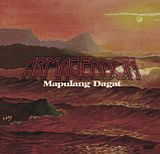
Jeepney, or "dyip", is the most popular and most common form of public transportation in the Philippines evident by the cliché "hari ng kalsada" or "king of the road." Jeepnies started to became popular among Filipinos after the WWII, wherein hundreds of it were sold by the American before they left. Though jeepnies had a foreign beginning, being a US military vehicle, it slowly became part of our culture and made the jeepney purely Filipino. We painted it with vibrant colors signifying the colorful values of Filipinos. We also designed it with Philippines symbols like Jose Rizal, carabaos, the Banaue rice terraces, and many more.
Modern day jeeps can accomodate up to 18-20 passengers, including the driver, as compared to 6 passengers before when it is just starting to emerge a public transport. There are a lot of manufacturers of jeepnies, the most famous one is Sarao Motors symbolized by a metal horse on its hood. Unfortunately, Sarao Motors is now close due to bankruptcy and they largely blame the emergence of FX's during that time. Some or most of the commuters would prefer these Fx's because of its airconditioning.
Jeeps are powered by salvaged and refurbished diesel engines which causes its negative downside, its poor emission control. I've never seen a jeep that doesn't have thick black trail of smoke behind it when it's running. If this is the case, I always wonder why it is still on the streets. It's not that I want them gone, but if jeepnies really causes to much smoke and bad emissions, why is it still allowed to be registered in the Land Transportation Office wherein it is mandatory for a vehicle to pass an emission test first prior to registration. With that kind of smoke coming out of it, it will surely fail. There's definitely something wrong happening inside LTO and those accredited emission testing centers.























